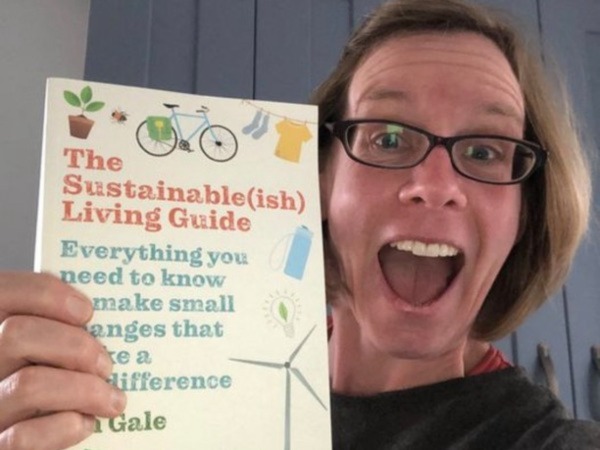“But I believe that at the very crux of living more sustainably is the need to consume less, and to consume more thoughtfully.”

So says Jen Gale in the first chapter of her book, The Sustainable(ish) Living Guide: Everything You Need to Know to Make Small Changes That Make a Big Difference (Bloomsbury Publishing, 304 pages). Gale makes the case that “There is simply no way we can carry on consuming at the rate we are, and still have a habitable planet left.”
The book encourages readers to examine their lives and consumption habits to lead them to what she calls a “sustainable(ish) lifestyle.” Gale isn’t trying to convince her readers to become minimalists but rather to consciously evaluate what they really need, purchase, and bring into their homes.
First, take responsibility
Gale uses the first chapter to focus on personal responsibility. She writes, “We need to start to question and push back against the seemingly incessant societal demands that more is better, that new is better, and the constant demand that we upgrade, replace, and buy newer all the time.” If you care about the environment, want to make a difference, and could benefit from consuming more consciously, then this book is for you. Not only does she focus on the big picture of preserving our environment, but she also provides steps to living a life with less clutter while choosing better options.
Next, start decluttering
Gale begins with decluttering. Her technique starts with selecting a month. On each day of that month, you choose an item in your home to get rid of, so by the end of the month, you will have gotten rid of about 30 things. This exercise takes only a small amount of time each day and rids your home of unnecessary items in small, easy steps. Plus, decluttering also reduces the time and energy that go along with acquiring, maintaining, and storing unneeded items. She acknowledges that decluttering may not be simple, especially as you begin the process, but she provides ways to make that process smoother emotionally, as well. One of those is the donation of usable goods. She cautions, “Only donate items that are clean, undamaged and in good condition — if you wouldn’t buy them, the chances are no one else will.”
Consider your plastic use
In a chapter titled, “Plastic free(ish),” Gale gives a brief history lesson on the growth of plastic production and its impact. She mentions this eye-opening statistic which Eco Partners has sourced from the United Nations Environment Program: Approximately 400 million tons of plastic are produced each year, and of that, only about 10 percent is recycled. She goes on to advocate for multiple solutions to this growing problem, including using plastic less often. She offers two practical suggestions. When grocery shopping, opt for reusable bags instead of plastic store bags, and try to limit your use of single-use plastics, such as utensils, straws, and food storage bags, wherever possible.
Become an everyday radical!
In the following chapters, Gale asks readers to examine their work, homes, and other areas of life to start incorporating changes that are more sustainable for the environment. In the final chapter, she highlights multiple ways to become an “everyday radical.” Her calls to action include buying less, buying more sustainable products, voting with your money, and donating unused household items. If you are interested in a single source to explain how you can live a more sustainable lifestyle, this book provides a timely and compact review of the subject.
Photo Courtesy of Jen Gale (facebook.com/mymakedoandmendlife)
